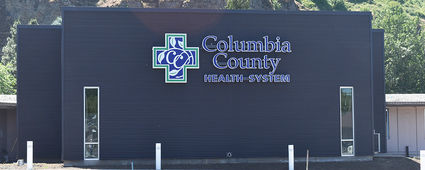HOSPITAL CORNER
Hospital District supports multiple long-term care strategies
August 13, 2020
The evolution of healthcare delivery moves woefully slow most of the time. Still, when we take a moment to realize how far we have come as an industry, it truly is incredible. There was a time when birthing occurred in a sterile field with heavily gowned doctors and nurses surrounding the expectant mother under bright procedure lights. Somewhere down the hall was an anxious, pacing father waiting for news. Now, the way babies are birthed is vastly different. Comfortable rooms transform when it's time, and close family is present in the room to provide a measure of comfort to the mother while also sharing in the experience.
On the other end of our life experience is aging. Much like the evolution of bringing new life into the world, we are innovating better ways to comfort and support our journey. While it is true that only slightly over 5% of the population ever need a nursing home level of care, it is a relief that aging is also innovating away from an environment of cold, institutional spaces to one which feels more home-like with personal spaces and residential like atmospheres.
In 2018 and 2019, 189 nursing homes closed–with 2020's numbers looking to match the previous two-years' closure rate. Some of this closure is financially driven as the cost of care has dramatically exceeded the revenues associated with the service delivery. Still, another reason for the de-bedding of skilled nursing is that the industry is merely evolving. We are looking for ways to better care for individuals in their homes longer. We are supporting family members assisting loved ones better, and we are developing local programs that allow people to remain in their communities longer.
Over the last couple of years, the health system has created a Palliative Care program that focuses on people diagnosed as having a chronic debilitating illness with the goal of improving and sustaining the quality of life for both the resident and family. We have created a robust community education and support program for caregivers and even businesses serving memory-care residents. Our Memory Café now provides a safe and social environment for our neighbors and their family members experiencing a memory impairing illness. We have partnered with Aging and Long-Term Care (ALTC) to provide in-home care coordination, foot health services, and the Stay Active and Independent for Life (SAIL) activities.
Soon, we plan to provide assisted-living services in relaxed cottages or houses for those who lack an in-home care support system or who are seeking a safer home environment. Like the evolution of birthing suites in hospitals, these homes will not resemble the institutions originally associated with long-term care, and while there will always be a higher, skilled level of care offered in our community, it will no longer be a one-size-fits-all solution to aging since each of us makes that journey differently.








